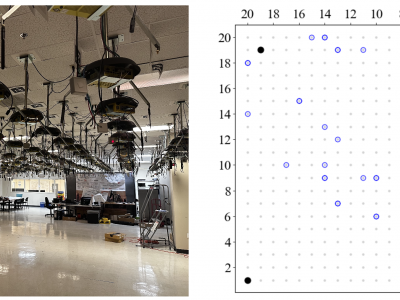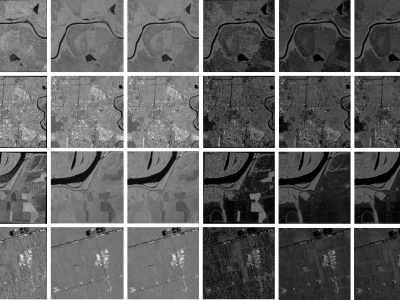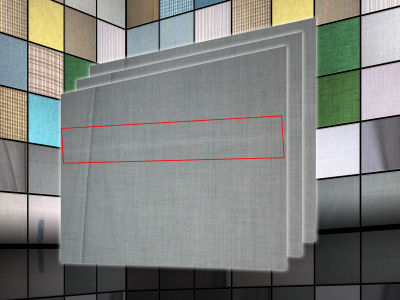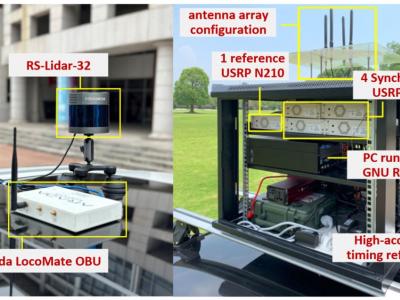Deep Learning
MobRFFI is a WiFi device fingerprinting and re-identification dataset collected in the Orbit testbed facility in July and April 2024. The dataset contains raw IQ samples of WiFi transmissions captured at 25 Msps on channel 11 (2462 MHz) in the 2.4 GHz band, using Ettus Research N210r4 USRPs as receivers and a set of WiFi nodes equipped with Atheros AR5212 chipsets as transmitters. The data collection spans two days (July 19 and August 8, 2024) and includes 12,068 capture files totaling 5.7 TB of data.
- Categories:
 56 Views
56 ViewsWhen training supervised deep learning models for despeckling SAR images, it is necessary to have a labeled dataset with pairs of images to be able to assess the quality of the filtering process. These pairs of images must be noisy and ground truth. The noisy images contain the speckle generated during the backscatter of the microwave signal, while the ground truth is generated through multitemporal fusion operations. In this paper, two operations are performed: mean and median.
- Categories:
 656 Views
656 Views
A deep learning (DL)--based detector is proposed for underwater acoustic (UWA) communication systems using orthogonal chirp division multiplexing with index modulation (OCDM-IM). The proposed high-performance and lightweight network integrates the detection of the index bits and the carrier bits as a whole, employing a squeeze-and-excitation (SE) mechanism enhanced residual neural network (ResNet) cascaded with a bidirectional gated recurrent unit (BiGRU) to detect OCDM-IM signals.
- Categories:
 127 Views
127 ViewsThis dataset contains LoRa physical layer signals collected from 60 LoRa devices and six SDRs (PLUTO-SDR, USRP B200 mini, USRP B210, USRP N210, RTL-SDR). It is intended for use by researchers in the development of a federated RFFI system, whereby the signals collected from different receivers and locations can be employed for evaluation purposes.
More details can be found at https://github.com/gxhen/federatedRFFI
- Categories:
 784 Views
784 Views
In this letter, a deep learning (DL)--based detector is proposed for underwater acoustic (UWA) communication systems using orthogonal chirp division multiplexing with index modulation (OCDM-IM). The proposed high-performance and lightweight network integrates the detection of the index bits and the carrier bits as a whole, employing a squeeze-and-excitation (SE) mechanism enhanced residual neural network (ResNet) cascaded with a bidirectional gated recurrent unit (BiGRU) to detect OCDM-IM signals.
- Categories:
 169 Views
169 ViewsThe advancement and ubiquity of digital networks have fundamentally transformed numerous spheres of human activity. At the heart of this phenomenon lies the Transmission Control Protocol (TCP) model, whose influence is particularly notable in the exponential growth of the Internet due to its potential ability to transmit flexibly through an advanced Congestion Control (CC). Seeking an even more efficient CC mechanism, this work proposes the construction of Deep Learning Neural Networks (MLP, LSTM, and CNN) for classifying network congestion levels.
- Categories:
 182 Views
182 ViewsSurface electromyography (EMG) can be used to interact with and control robots via intent recognition. However, most machine learning algorithms used to decode EMG signals have been trained on small datasets with limited subjects, impacting their generalization across different users and tasks. Here we developed EMGNet, a large-scale dataset for EMG neural decoding of human movements. EMGNet combines 7 open-source datasets with processed EMG signals for 132 healthy subjects (152 GB total size).
- Categories:
 1247 Views
1247 ViewsWe introduce a new image dataset named FabricDefect, which focuses on the warp and weft defects of cotton fabric. The images in the FabricDefect dataset were manually collected by several experienced fabric inspectors using a high-definition image acquisition system set up on an industrial fabric inspection machine. The sample collection process lasted for three months, with daily sampling from 6 a.m. to 8 p.m., covering various weather conditions and external lighting scenarios. All images were meticulously gathered according to predefined standards.
- Categories:
 854 Views
854 ViewsThe ultrasound video data were collected from two sets of neck ultrasound videos of ten healthy subjects at the Ultrasound Department of Longhua Hospital Affiliated to Shanghai University of Traditional Chinese Medicine. Each subject included video files of two groups of LSCM, LSSCap, RSCM, and RSSCap. The video format is avi.
The MRI training data were sourced from three hospitals: Longhua Hospital, Shanghai University of Traditional Chinese Medicine; Huadong Hospital, Fudan University; and Shenzhen Traditional Chinese Medicine Hospital.
- Categories:
 570 Views
570 Views





